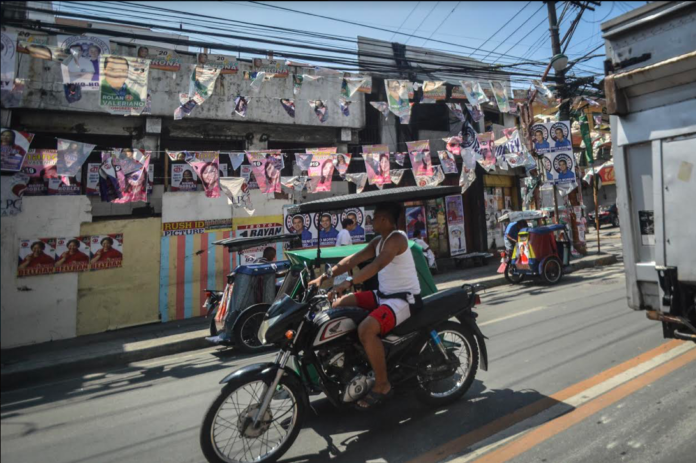THE COUNTRY’s poor waste management continues to worsen Manila’s garbage problem, causing more harmful effects to the environment.
Arlen Ancheta, who teaches at the UST Graduate School, said Manila’s garbage problem continues to exist because of the non-compliance of the citizens and the local government to the present laws.
“There s a law, RA 9003, it caters to waste segregation, segregated collection, material recovery facility, she said in an interview. “But these are not followed by the households, by the local government, they just pay for the contractors to collect garbage, but segregated collection is not strictly followed.”
RA 9003 or “Ecological Solid Waste Management Act of 2000” was signed into law in 2001.
A report by the Manila Bulletin in 2018 said the city’s Public Services department collects 2,000 tons of garbage bags in 500 trucks on a daily basis.
Manila’s first and third district were reported to have the biggest amount of garbage collected every day, especially in populous places such as Divisoria, Quiapo and Binondo to name a few.
Rodne Galicia, lead convenor of environmental movement Living Laudato Si, said lawmakers should not stop on the implementation of the laws but should work on penalizing those who violate it.
“Kung nagkasala ang isang barangay at hindi nakolekta ang basura mo, at pag nagkasala ang isang tao at nakita na hindi siya nag-segregate, bakit hindi pinaparusahan? I think that’s one of the biggest hypocrisy ng ating mga law enforcers,” Galicia said.
“We may have the best laws in the world but we actually lack the enforcement of our laws,” Galicia added.
Manila Bay reclamation
Thomasian environmentalists are urging the local government of Manila to reconsider its decision to allow reclamation projects in the Manila Bay, citing the harmful impacts it may cause to the city.
Galicia said the reclamation projects would pollute the Manila Bay waters and affect its existing ecosystems.
“Double triple wammy ‘yan kasi maaapektuhan ‘yong mga natural resources na pagkukuhanan mo ng panambak o baka naman basura itatambak mo diyan o baka mga sinira mo na buildings kaya meron kang mga semento,” Galicia told the Varsitarian.
“[H]indi lamang ‘yan para sa tao, para rin ‘yan sa may buhay na nandiyan sa Manila Bay,” he added.
Galicia, an alumnus of the University, stressed that the Manila Bay reclamation is not only an environmental issue but a “Pandora’s Box” that will open up other existing issues.
“[M]araming problema ang makikita natin… ‘yong mga weaknesses and jams ng ating mga policies na dapat i-reform o kaya dapat palitan o kaya dapat i-enforce,” he said. “[T]he problem is we always see Metro Manila as the Imperial Manila na kung saan lahat ng development ay diyan mapupunta.”
Ancheta doubted that the reclamation projects would help the livelihood of Filipinos.
“Are we really catering reclamation areas for the Filipinos? Atin ba talaga ‘yon? Para ba talaga sa atin ‘yon? E mga casino ‘to,” said Ancheta in an interview.
She added that these will destroy the natural barriers in the Manila Bay which are the “first line of defense” against natural disasters.
But for Dennis Lacuna, planning and development officer in Manila, it is important to study the reclamation projects and to consider the economic aspect of it.
“One thing that you should not rush is reclamation. [I]t will take expertise that is larger than what the local government can offer now. So, it should be studied judiciously, ‘wag kaagad naman nating sabihin na ‘wag. It might be a need,” Lacuna said.
He said if other countries have successfully done reclamations without destroying the environment, then Manila should be open to considering them.
Reclamation is the process of cultivating submerged land or waste land, making the area suitable for building infrastructures or for other purposes.
Executive Order 74 was approved last Feb. 1, which transferred the power of approving reclamation projects from the National Economic and Development Authority to the Philippine Reclamation Authority (PRA), which is under the Office of the President.
PRA Assistant General Manager Joselito Gonzales said at least 22 proposed reclamation projects in Manila Bay covering 20,000 hectares have yet to be approved.
DENR Undersecretary Benny Antiporda said the reclamation projects need to be evaluated first for it will affect the rehabilitation of the Manila Bay waters that started last January.
‘Lack of green spaces deplorable’
Lacuna stressed that the lack of green spaces in Manila is “deplorable,” saying building parks and green areas could be a solution to the problem. However, it “might not be to the best interest” of the city, he said.
“[W]e have a very limited amount of green spaces as of now, as a matter of fact, one of the green spaces that we have na medyo malaki ay near the Pandacan area, the Plaza Asul, na inappropriate ngayon ng national government, gagamitin nila na part ng NLEX-SLEX connector,” he said.
Lacuna pointed out that the Manila Parks and Recreations Development Office is now focusing on the rehabilitation of some of the city’s parks.
“We are not a rich country, so we do not have the luxury of creating new spaces. [I]t’s hard to create something new in an old city, but you can renew old things, rehabilitate old things,” said Lacuna.
The Arroceros Forest Park, dubbed as the “last lung of Manila,” was reportedly under threat due to the lapse of memorandum of agreement between the government of Manila and the environmental group Winner Foundation.
Although the proposed project of building a school gymnasium in the park was postponed by incumbent Manila City Mayor Joseph Estrada in 2017, there are no written agreement or policy that will secure the forest park.
Ancheta said if the project pushes through, it will affect the “urban biodiversity” inside the forest park and the microclimate of the area.
“The total economic value of Arroceros Forest Park is more than the value of this generation. So, magkakaroon siya ng affect sa microclimate kasi roon sa Arroceros Forest Park, nare-regulate niya ‘yong pollution in the area,” she said.

















